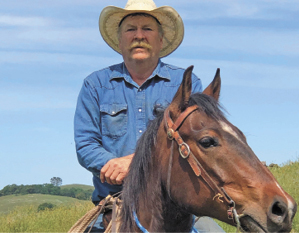From the Fields - Michael David Fischer

Photo/Courtesy Michael David Fischer
By Michael David Fischer, Calaveras County cattle rancher
It’s towards the end of our season for cattle. We’re putting out mineral and supplement for the cattle. We’re starting to feed hay a little bit on the cattle that I leave in Calaveras County. The rest of the cattle are up in Sierra Valley, and the feed up there is the best it’s been in years. We’ve had a lot of rainfall. Grass is nice and green. Cattle are doing very well, although it is starting to feel a little bit like fall.
We had the late spring rains. It’s a higher elevation (in Sierra Valley)—5,000 to 6,000 feet—so the grass came a little bit later. But it stayed cool all through the summer, and we’ve had periodic rainfall that has helped a lot with the grass in between irrigating. With the rain, you don’t have to irrigate quite as much. I’m a fall calver, so I’m in the middle of calving.
My cattle sold very well this spring—the highest they’ve ever been. It’s record highs on the price of the calves, which is nice, although production cost is also as high as it’s ever been. Fuel cost is really what’s driving everything up for me right now. Fuel triggers everything. The higher the fuel price, the higher for every commodity that you may purchase. When you ship your calves, it’s higher for them to ship the calves. I just filled up my pickup a few minutes ago, and it was $200.
The price of calves has helped us out. Unfortunately, it gets us in the long run because consumers can’t afford to pay the higher price. Pretty soon they’ll start looking at alternative proteins instead of beef because it’s very costly for them to put meat on the table. We’re still able to make it, but you’ve got to like the cow-calf business to stay in it because there’s not a huge amount of profit.




